 You Know More Hebrew Words Than You Think
You Know More Hebrew Words Than You Think

Jewish Geography

Jewish Geography
21 min read
A comprehensive overview covering 2000 years of history.
Jews escaping Spain due to the Expulsion had few doors open to them. Although legends discuss Jews escaping to the Americas, the fact is that the vast majority chose to go to a country that opened its doors and whose government mandate was to receive the Jews cordially. There, the Spanish Jews joined the other communities and built arguably the most prosperous Jewish community of the 16th and 17th centuries.
Which country was this? The surprising answer is: Turkey.
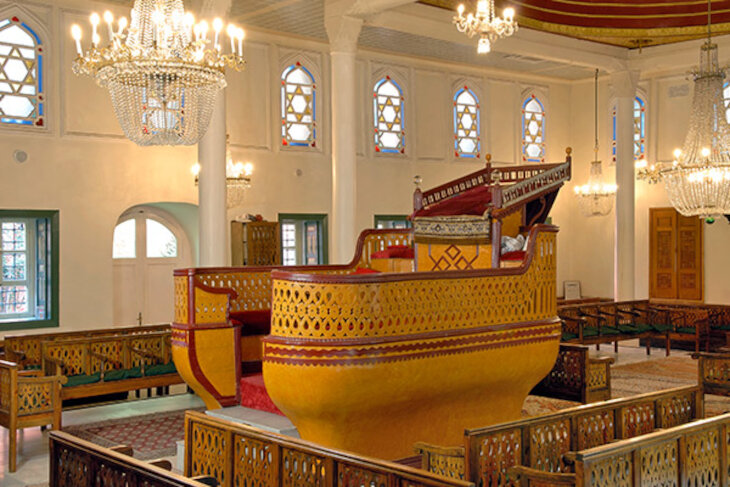 In the beautiful synagogue of Ahrida, one of the oldest in Istanbul, the bima is shaped like a galleon, a Spanish ship, reminiscent of Noah’s Ark
In the beautiful synagogue of Ahrida, one of the oldest in Istanbul, the bima is shaped like a galleon, a Spanish ship, reminiscent of Noah’s Ark
Turkey is one of the world's earliest continuously settled regions and was originally known as Anatolia or Asia Minor. The capital of Turkey was known by different names at different points in history: Byzantium, Constantinople, and then Istanbul. The capital was a thriving port city due to its prime geographic location between Europe and Asia and its natural harbor on the shores of the Black Sea in the North and the Aegean Sea to the West, and the Mediterranean Sea in the South.
Early Jewish settlements are mentioned by the renowned historian Josephus Flavius (37-100) when he relates that Aristotle“met Jewish people with whom he had an exchange of views during his trip across Asia Minor.”
Ancient synagogue ruins have been found in Sardis, near Izmir, dating from 220 B.C.E., and traces of other Jewish settlements have been discovered in other areas of Turkey.
 Ancient synagogue of Sardis
Ancient synagogue of Sardis
A bronze column found in Ankara has a fascinating inscription that confirms the rights Emperor Augustus (63 BCE-14 CE) accorded the Jews of Asia Minor, including the right to send donations to Jerusalem and not be called to the palace on the Sabbath.
Ironically, one of the earliest pieces of information we know about the Jewish community in Turkey is regarding expulsion. In the year 422, the Jews were expelled from Byzantium by Theodosius II. It was not until nearly 400 years later that they were permitted to return. These newly settled Byzantine Greek-speaking Jewish communities, called Romaniotes, chose to reside in the large coastal cities of the Aegean Sea.
Despite numerous persecutions, the Jewish communities continued to reside in Turkey during the Byzantine period. Byzantine emperors wielded both political and religious power, and thus the discrimination against the Jews was particularly severe under their rule. Jews were restricted to specific economic activities, confined to specially designated neighborhoods, and persecuted because of their religion. Under Justinian rule, persecution against Judaism was unbearable, to the extent that it was forbidden to recite the Shema since the phrase “our G-d is the only G-d” was considered an insult to the Christian concept of the Trinity.
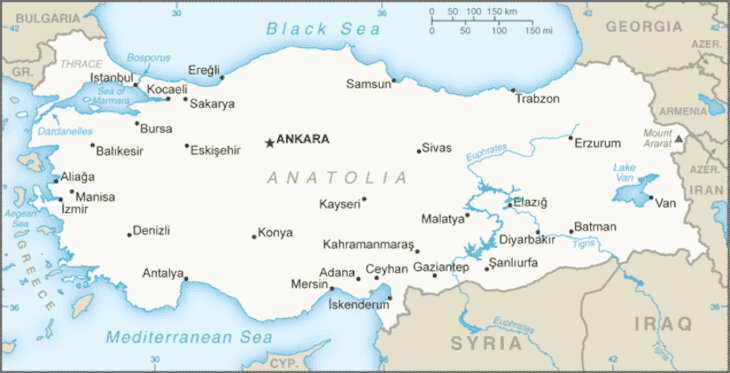 It is, therefore, not surprising that when the Muslims began to conquer Turkey, they were welcomed by the Jewish community.
It is, therefore, not surprising that when the Muslims began to conquer Turkey, they were welcomed by the Jewish community.
The Islamic presence in Turkey began in the 8th century when Turkish tribes fought alongside Arab Muslims against Chinese forces at the Battle of Talas. By 751, Arab Muslims controlled the Anatolian Peninsula and Central Asia. Influenced by their beliefs, many people converted to Islam over the next few centuries.
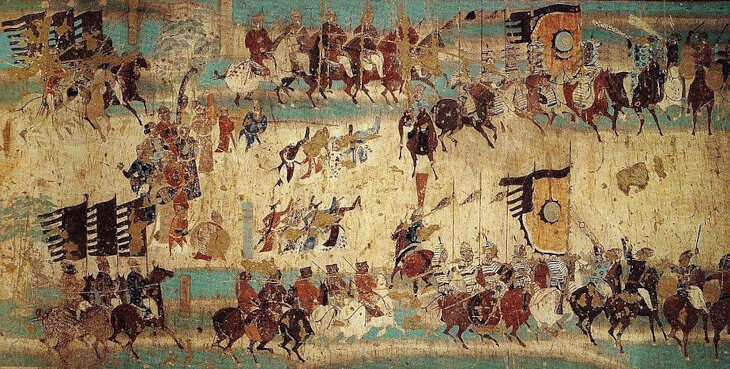 The Battle of Talas
The Battle of Talas
The Turkish people became servants to the Muslim rulers, then they were their soldiers, and eventually, they rose to be the Caliph's favored troops. By the end of the ninth century, the Muslim Turkish leaders gained significant military and political power and started forming their own empires. The Seljuk Turks were the most powerful and established an empire by 1037. They captured Bagdhad in 1055 and in 1071 gained control of the Anatolian Peninsula.
When the Seljuk Turks increased, they brought the Islamic religion and Persian culture to what had previously been a Christian Byzantine Empire. Thus began the bumpy transition of Turkey from European to Persian in terms of culture, religion, politics, and identity.
The Seljuk Empire covered over a million square miles across parts of the Middle East and Central Asia, although it did not rule in the southern part of Turkey, which remained Byzantine. The Seljuk Empire lasted until 1194.
The 14th century saw the emergence of a new power in the Middle East. The Ottoman Turks under Sultan Osman (1288-1326) advanced across Anatolia and became the new rulers of the Romaniote Jewish communities still under the oppressive Byzantine rule. Just as their brethren had done to the Seljuk’s, they welcomed the Ottomans as their liberators and even helped the Ottomans capture the city. Their hopes for positive change were realized, and Sultan Osman’s son Sultan Ohran (1323-62), permitted them to build theEtz ha-Hachayim(Tree of Life) synagogue, which operated for over 600 years.
From the beginning, however, the tolerance of the Ottomans toward the Jews was dictated by reasons of a vested interest. The Ottomans were primarily a society of warriors and peasants, whereas the Jews were involved in commerce, and their efforts created a robust economy.
As in other Islamic lands, the Ottomans followed the rule of dhimmi regarding their Jewish citizens. This meant that the Jews were guaranteed security but were required to pay additional taxes and were treated as second-class citizens. In general, the Ottoman sultans were pragmatic regarding the Jews and enabled them to live peacefully.
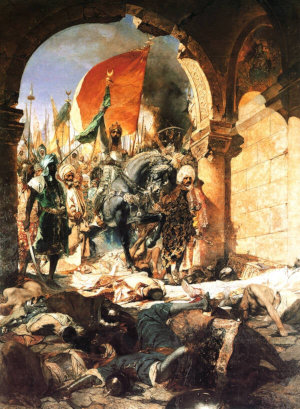 Sultan Mehmed II became Mehmed the Conqueror after taking the 1,000-year-old fortress capital of the Byzantine Empire, Constantinople, in May 1453.
Sultan Mehmed II became Mehmed the Conqueror after taking the 1,000-year-old fortress capital of the Byzantine Empire, Constantinople, in May 1453.
Sultan Mehmet II, also known as “the Conqueror,” expanded the Ottoman Turkish Empire and shocked the world when he conquered the proud capital of Byzantium, Constantinople, in 1453. There he encountered an oppressed Romaniote Jewish community, which enthusiastically welcomed him. Sultan Mehmet II proclaimed to all Jews“... to ascend the site of the Imperial Throne, to dwell in the best of the land, each beneath his Dine and his fig tree, with silver and with gold, with wealth and with cattle...” The Sultan renamed Constantinople Istanbul, which it is called to our very day.
Rabbi Yitzchok Zarfati wrote a famous letter to his fellow Jews, saying, “I assure you, Turkey is a country of abundance where, if you wish, you will find rest.”
Thus, from the 14th century onward, many European Jews that were expelled from their homelands migrated to Turkey. Expelled Jews from Hungary came in 1360 and from France in 1394, as well as Jews from Sicily and Salonika. In 1470, Jews expelled from Bavaria by Ludwig X found refuge in the Ottoman Empire. Tens of thousands of Sephardim would soon follow them after they were expelled from Spain.
In 1492, Sultan Bayezid II ordered the governors of the provinces of the Ottoman Empire “not to refuse the Jews entry or cause them difficulties, but to receive them cordially. Roughly 100,000 Jews fled Spain under the Alhambra Decree, and most chose to go to the Ottoman Empire, with 60,000 Jews arriving in 1492 alone. The Sultan said that “the Catholic monarch Ferdinand was wrongly considered wise since he impoverished Spain by expelling the Jews and enriched Turkey.”
Between the late 15th and 16th centuries, additional Jews arrived in Turkey from Italy and Portugal and established or joined thriving communities, especially in Istanbul and Salonika.
The steady stream of Jews arriving from Spain lasted for several decades. Some came directly, while others only after long journeys, notably by way of Italy. Due to the large influx, the original group of Greek-speaking Romaniote Jews was eventually absorbed by the Sefardic community.
The increase in Jewish population was apparent in the censuses taken at that time. In 1477, Jewish households in Istanbul numbered 1,647, or 11% of the total. Half a century later, that number had quadrupled. In another telling census, taken in 1520-1530, there were 2645 Jewish households in Thessaloniki, more than half of the city’s population. This is incredible because 30 years earlier, there were no Jews in this large Balkan port city. From the 16th century onward, Thessaloniki became the capital of the Judeo-Spanish world and remained so until the end of the Ottoman Empire.
For 200 years following the expulsion from Spain, the prosperity and creativity of the Ottoman Jews rivaled that of the Golden Age of Spain.
For 200 years following the expulsion from Spain, the prosperity and creativity of the Ottoman Jews rivaled that of the Golden Age of Spain. Jews played vital roles in medicine, innovation, government, and finance.
Most of the Sultan’s court physicians were Jews, including Hakim Yakoub, Joseph and Moshe Hamon, Daniel Fonseca, and Gabriel Buenauentura.
Immigrating Jews brought with them new techniques of navigation and weapons production. The printing press was one of the most significant innovations Jews brought to the Ottoman Empire. In 1493, only one year after their expulsion from Spain, David, and Samuel ibn Nahmias established the first Hebrew printing press in Istanbul. However, Turkish authorities forbade them to use the Arabic alphabet so that Turkish scribes and calligraphers would not be deprived of work.
In the economic sphere, Jewish contributions were most significant. Jews also had vital roles in tax administration, the Empire’s finances, the textile industries, and banking.
In Torah scholarship, Turkey had scholars of note, some of whom arrived there due to the expulsions.
The famous Rabbi Yosef Caro (1488-1575), considered the most significant Sefardic halachic authority in the past 600 years, fled Spain during the expulsion and moved to Constantinople. He compiled most of his monumental Beis Yosef in Adrianople, before moving to Safed.
 Rabbi Yosef Caro
Rabbi Yosef Caro
Rabbi Shlomo HaLevi Alkabetz (1500-1576) lived in Turkey and later moved to the Safed and composed the L’chah Dodi, the song sung by Jewish communities worldwide when Shabbat begins.
Rabbi Eliyahu Mizrachi (1450-1525) served as Chief Rabbi of Turkey for 30 years and is famous for his work, the Ra’am, which elucidates Rashi’s explanations on the Torah.
Rabbi Yehudah Rosnes (1657-1727) was the Chief Rabbi of Istanbul and the author of a commentary on the Rambam known as the Mishnah L’Melach. His student was Rabbi Yaakov Culi, who began to write the widely studied Ladino commentary Me’Am Loez on the Torah. (He died two years after initiating the work and it was finished by others).
In 1516-7, Selim I conquered Syria and Israel. With that began a special relationship between the Turkish communities and the communities of Israel. Turkish Jews often emigrated to Israel, and rabbis from Israel relocated and served as rabbis for the communities of Turkey.
 Suleiman the Magnificent
Suleiman the Magnificent
With the conquering of Israel, Turkish interest in Israel increased. Suleiman the Magnificent, one of the greatest sultans, made a lasting mark in history when he rebuilt the walls around the Old City of Jerusalem that stand to our very day.
In 1558, Sultan Suleiman granted a Jewish woman, Dona Gracia Mendes Nasi, a long-term lease on the Tiberias region in Israel. This area was largely desolate, and Dona Gracia committed to giving a large amount of yearly tax revenues from this area to the Sultan.
 Walls of Jerusalem’s Old City built by Suleiman the Magnificent
Walls of Jerusalem’s Old City built by Suleiman the Magnificent
Dona Gracia Mendes Nasi was one of the wealthiest and most influential Jewish women of Renaissance Europe. She married into the eminent international banking family known as the House of Mendes. She was the aunt, mother-in-law, and business partner of Don Yosef Nasi, who became a prominent figure in the Ottoman Empire as the Duke of Naxos. Don Yosef was responsible for much of the delicate maneuvering of Turkey’s declaration of war against Venice in 1571 and the resultant conquest of Cyprus (which still plays a role in current-day international politics). Dona Gracia was renowned for her concern for Jews worldwide and for her wisdom and courage in helping them. She even developed an escape network that saved hundreds of Conversos - forcibly converted Jews - from the terrors of the Inquisition.
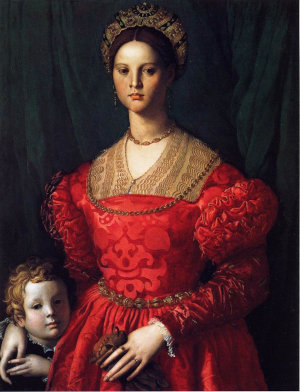 Dona Gracia Mendes Nasi
Dona Gracia Mendes Nasi
Dona Gracia intended to make Tiberias a major new center of Jewish settlement, trade, and learning. She also aided Jews in settling nearby Safed, and in less than 100 years, the population of Safed grew from 300 families to 10,000 people, making it the most Jewishly populated city in Israel at that time.
After the passing of Dona Gracia and Don Yosef Nasi, other Jewish leaders were influential in the Turkish court. A Portuguese Marrano, Aluaro Mandes, was named Duke of Mytilene in return for his diplomatic services to the Sultan. Salomon ben Nathan Ashkenazi arranged the first diplomatic ties with the British Empire.
Turkish Jews of the 16th and 17th centuries were the most prosperous Jewish group in the world, and the Jewish community thrived in this tranquil and relatively free atmosphere.
In the 17th century, a person rose to influence who would forever change the Jewish communities of Turkey and the world in a most damaging way. Shabtai Tzvi was born in 1626 in Smyrna, Turkey, on the Ninth of Av, a day on which, according to Jewish lore, the Messiah was to be born. Tzvi’s family wereRomaniotes.
Brilliant and charismatic, Shabtai was already given the title of chacham, “wise man,” by the age of twenty. Nevertheless, more pronounced than his scholarship were his strange behavior and extreme emotions between deep depression and overflowing ecstasies.
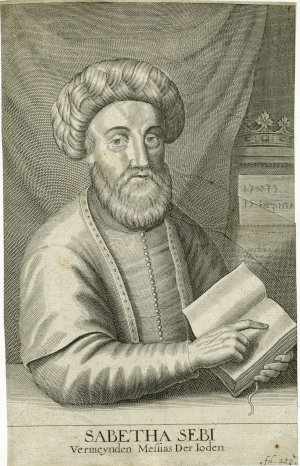 Shabtai Tzvi
Shabtai Tzvi
Some Smyrna Jews were strongly drawn to him and inspired by his religious utterances. However, his repeated claims to be the Messiah, and his utterances of the ineffable name of God, led the rabbis of Smyrna to expel him from Smyrna in the early 1650s.
He eventually traveled to the Holy Land, where he consulted with Nathan Benjamin Levi, known from that time as Nathan of Gaza. Nathan claimed to be a soul healer, and in a fateful meeting, Shabtai Tzvi met with him to “find a tikkun (rectification) and peace for his soul,” as one report put it. Nathan was convinced that Shabtai Tzvi was the Messiah, and at Nathan’s urging, Shabtai revealed himself as such. Nathan professed to be Elijah the Prophet and became a leading figure in this Messianic movement. Although the rabbis of Jerusalem denounced him and declared both to be frauds, the movement continued to gain momentum.
Shabtai Tzvi returned to Smyrna in 1665 with a large entourage, and great homage was paid to him there. Along with Nathan of Gaza, he made announcements declaring himself the Messiah and making wild predictions and claims as to the imminent miracles and redemption that were to take place. Despite his detractors, he became the leader of the community in Smyrna. He removed the former rabbi, Rabbi Aaron Lapapa, from his position and appointed Rabbi Chaim Benveniste as rabbi instead. His popularity grew, and he used his power to crush the opposition.
His fame spread as people of all faiths repeated stories about various miracles and sightings. It was said: “in the north of Scotland, a ship had appeared with silken sails and ropes, manned by sailors who spoke Hebrew. The flag bore the inscription ‘The Twelve Tribes of Israel.’” Letters regarding Shabtai Tzvi reached Europe and North Africa with embellished reports about the movement, and enthusiasm throughout the Jewish world grew.
Italy, Germany, the Netherlands, Hamburg, and Amsterdam all heard about the events in Smyrna. The Jewish community of Avignon, France, even prepared to emigrate to the new kingdom in the spring of 1666.
Even though Shabtai Tzvi had a considerable following in the Jewish world (much more than Jesus ever had), most of the European rabbis who saw how Shabtai Tzvi and his followers violated Jewish law were not fooled and warned against him. Foremost among his opponents was Rabbi Yaakov Sasportas of Amsterdam.
Eventually, Shabtai Tzvi was arrested by the Sultan of the Ottoman Empire and imprisoned in Gallipoli. Even this did not deter his followers, and many of them flocked to visit him in prison,
The debacle came to its devastating end on September 15, 1666. Shabtai Zvi was brought before the Sultan and given the choice of death or conversion to Islam, and he chose to convert. Shaken to the core at his decision, the vast majority of the Jewish world realized he was an imposter.
Yet, believers in his Messianic claims tragically remained. Approximately 300 families converted to Islam along with him and became known as Dönmeh (converts). Nathan of Gaza continued to support Shabtai Tzvi, explaining that his conversion was a deep mystery and part of a Kabbalistic process toward the final redemption. He and other followers of Shabtai Tzvi continued to adhere to a paradoxical theology that combined aspects of Judaism with a continued belief in Shabtai Tzvi.
In the aftermath of the Shabtai Tzvi saga, the Ottoman authorities began to regard the Jewish minority, which until then had attracted no particular concern, with growing suspicion. Western travelers who passed through the Jewish areas of Istanbul described a new reality in sharp contrast to what was described two centuries before. These Turkish Jews kept to themselves in their communities, mostly earning their living as shop owners, artisans, or low-level employees.
The Dönmeh continued to exist as a minority, set apart from the Jewish community by their conversion to Islam and belief in Shabtai Tzvi. By the 1680s, much of the Dönmeh resided in Salonika and continued to practice certain Jewish rituals.
The exact amount of the Dönmeh is unclear. According to Danish traveler Karsten Niebuhr, around 600 Dönmeh families lived in Salonika in 1774 and married only among themselves. Before World War I, their population was estimated to be between 10,000 and 15,000.
In an unexpected turn of events, the Dönmeh played a crucial role in the Young Turk movement, the group of modernist revolutionaries who brought down the Ottoman Empire. After the founding of the Turkish Republic, the dönmeh strongly supported the Republican, pro-Western reforms of Atatürk, which wanted to restrict the religious establishment's power and modernize Turkey.
 Etz ha-Hayim Synagogue before it burnt in 1941. Visit of late Chief Rabbi Haim Bedjerano.
Etz ha-Hayim Synagogue before it burnt in 1941. Visit of late Chief Rabbi Haim Bedjerano.
The first administration that came to power after the Young Turk revolution in 1909 included several ministers of Dönmeh origin, including the minister of finance, Javid Bey. One assertion that many Jews made (although this was denied by the Turkish government) was that Kemal Atatürk (1881-1938), the founder of the Modern Turkish State, was of Dönmeh origin. This view was eagerly embraced by many of Atatürk’s religious opponents in Anatolia as a means of discrediting him.
However, as a society, the Dönmeh could only retain their integrity and institutional framework when they were concentrated in Salonika. When they were compelled to leave Salonika in 1924 due to the Greco-Turkish War, many settled in Istanbul or in Turkish cities such as Izmir and Ankara. Within a short time, assimilation became widespread. By the end of the 20th century, the Dönmeh were fully assimilated into Muslim Turkish society.
The status of Jews in Turkey began to improve under the Tanzimat reforms in the late 18th century. These reforms were part of a process to transform the Empire based on European models and were intended to signify that the Ottoman Empire belonged among the European nations. As part of the reforms, there was now official recognition of Jews as separate communities and a state-appointed chief rabbi.
The proclamation of the Hatti Humayun in 1856 made all Ottoman citizens, Muslim and non-Muslim alike, equal under the law and granted that all subjects be allowed to worship their religion freely. Each religion was also assigned its own government-appointed leader. Although Greek and Armenian were amenable to this, the diverse Jewish population resented this state intrusion into their internal communal affairs. With the reorganization of the state came new professional opportunities, and Jews flourished in banking, trade, and manufacturing and began to enter government service.
As part of the impact of reforms throughout Turkey, the leadership shifted from religious leaders to secular ones, which also affected the Jewish community.
World War I ended the glory of the Ottoman Empire, and in its place rose the Young Turkish Republic. Mustafa Kemal Ataturk was elected president, the Caliphate was abolished, and a secular constitution was adopted. However, in reality, Islam remained inextricably intertwined with Turkish culture.
According to a census taken in 1927, 81,872 Jews lived within the boundaries of the Turkish Republic under Mustapha Kemal, and most were concentrated in the cities of Istanbul and Izmir.
Devastated by the crumbling of the Empire, the Turkish Republic attempted to forge a new national identity that regarded minorities with suspicion. This significantly affected the Jewish community's living conditions as the government insisted that all republic residents identify as Turkish. The widespread Universal Israelite Alliance schools that served the Jewish community were forced to break their ties with their French sponsors, and Turkish was made the language of instruction in all schools. Although the demands were made of the Jews to integrate, they were simultaneously identified as foreigners, and a double standard was applied to their community.
This was most apparent with the “exceptional tax” instituted in 1942. On average, this tax demanded 5% from Muslims and 150-200% from Greeks, Armenians, and Jews. Most had no way to pay such exorbitant taxes and were forced to sell their belongings or be sent to work camps. Although the tax was abolished in March 1944, its effect on Turkish Jews was traumatic and began to pave the way for the massive emigration of Turkish Jews to Israel that would begin in 1948.
 Istanbul Ashkenazi Synagogue
Istanbul Ashkenazi Synagogue
Yet, during World War II, Turkey was a safe passage for many Jews fleeing the Nazis. Seizing an opportunity in 1933, Ataturk invited prominent German Jewish professors to flee Nazi Germany and settle in Turkey. Before and during the war, these academics contributed a great deal to the development of the Turkish university system.
During the Holocaust, the Turkish Jews remained secure, although Greece's nearby Jewish communities were almost wiped out. Several Turkish diplomats persevered in their efforts to save the Turkish Jews from the Holocaust and succeeded. Mr. Salahattin Ulkumen, Consul General at Rhodes from 1943-1944, was recognized by the Yad Vashem as a Righteous Gentile in June 1990.
The present size of the Jewish community is estimated at 14,500 out of the total population of 85 million. Most Jews live in Istanbul, and Sephardim account for 96% of the population.
Turkish Jews are led by and legally represented by the Chacham Bashi, the Chief Rabbi. There remains a small group of one hundred Karaites who are not part of the normative Jewish community and do not accept the authority of the Chief Rabbi.
Jews in Turkey have been the victims of violent antisemitism on multiple occasions. On September 6, 1986, a member of the Palestinian terror group Abu Nidal opened fire on the Neve Shalom synagogue in Istanbul, killing 22 Jewish individuals. Neve Shalom synagogue was also the target of a terror attack in November 2003 when multiple truck bombs went off all around Istanbul. One exploded in front of Neve Shalom, and another exploded in front of the Bet Israel congregation, killing and injuring many people.
Turkey has experienced underlying antisemitism for much of its history, but the antisemitism has been especially apparent since Prime Minister Recep Tayyip Erdogan’s rose to power. Turkey under Erdogan is frightening for Turkish Jews. The Turkish leader and his top aides make anti-Semitic remarks and under his rule, antisemitism is on the rise. For example, in 2014, in response to Operation Protective Edge, over 30,000 Turkish-language tweets were published, including comments that stated positive things about Hitler and the Holocaust. Among other discomfiting signs of antisemitism, Hitler’s Mein Kampf and The Protocols of the Elders of Zion were best-sellers in Turkey in recent years. According to the ADL’s surveys, 69% of Turks hold some anti-Semitic beliefs. This figure is higher than other European countries and slightly lower than the Middle East average.
Against this backdrop, Turkey’s centuries-old Jewish community small community has had a considerable jump in emigration, especially to Israel. Turkey, a country that once welcomed Jews worldwide, is losing its Jews to emigration and assimilation. In an ironic twist, there are even Turkish Jews that emigrate to the relative safety of Spain and Portugal, reversing the historical path taken centuries earlier.
Learn more about the global Jewish population with our article: 'How many Jews are there in the world?'.

Great article, but sadly without sources.